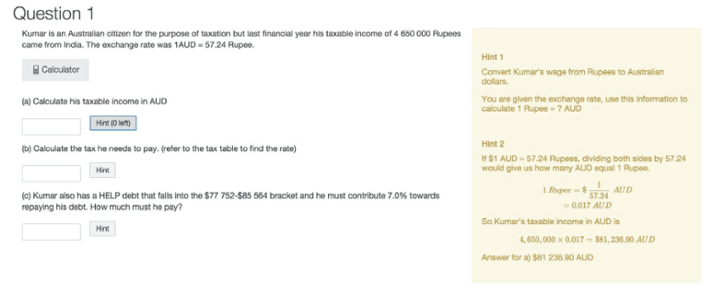Through the use of these interactive questions, student engagement is increased substantially, especially in comparison to more traditional forms of assessment. Furthermore, advanced assessment features also exist to further improve and complement TEIs.
One example is Learnosity’s hints feature, which allows authors to create customized scaffolding that students can use to answer questions. Using the feature is quite simple for both authors and students. Question creators simply input the hint or hints in the order they should be shown. The hint can then be presented to the student as required. In many instances, this is via a clickable button on the screen. Students can then choose whether or not to utilize the hints. They can answer the question without using any, or they can use only as many as they need.
The advantages of this feature are easy to see. On the most basic level, hints can help guide students toward the answer, rather than creating a strict question-answer, correct-incorrect dynamic. Hints can sometimes help students demonstrate knowledge that was learned but not fully mastered. Hints further act as teaching tools to prompt students to utilize what they can remember, which further reinforces what they have mastered and allows them to focus more fully on what they have not.
Because authors can utilize more than one hint, instructors can create a scaffolded approach to help students work their way to the answer. Students can even choose whether or not to reveal the hints. Authors can start with more general hints and then progress to more specific ones. The final hint can even include a worked solution that either shows the students how to answer the question or stops one step short of the final answer. These worked solutions also model for the student what is expected of his or her answer. This flexible approach allows students who need additional help to receive it.




